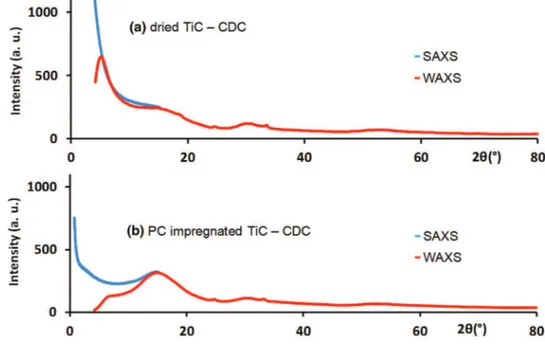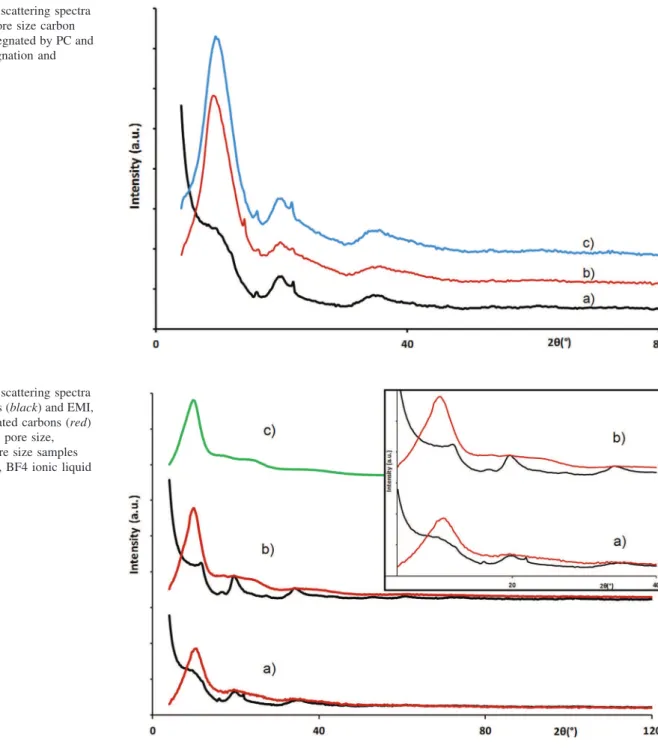TiC-carbide derived carbon electrolyte adsorption study by ways of X-ray scattering analysis
Texte intégral
Figure


Documents relatifs
- The concentric shell model of the micelle with the radial scattering length density profiles expressed in 101° cm- 2.. Upper part : SANS, lower part : SAXS for a
This review article focusses on the most recent advances in x-ray and neutron scattering studies of water structure, from ambient temperature to the deeply
The elementary analysis of the data, which consisted in determining the radii of gyration and fractal dimension of the scattering objects, was carried out using the Guinier–Porod
STRUCTURE OF FRACTAL COLLOIDAL AGGREGATES FROM SMALL ANGLE X-RAY SCATTERING... Martin
Comparison of calculated SAXS intensity from analytical covariance (lines) and projection (symbols) for one realization (1024 3 voxels volume) of a one-scale Boolean model of
scaling law, as a function of the surfactant concentra- tion cs and the characteristic length ç, in the two extreme cases : the film contribution either dominant or
As the magnetic order is only short range, it seemed interesting to study these alloys by small angle scattering with X-rays and neutrons.. Tb alloys exhibit hish magnetic
L’archive ouverte pluridisciplinaire HAL, est destinée au dépôt et à la diffusion de documents scientifiques de niveau recherche, publiés ou non, émanant des